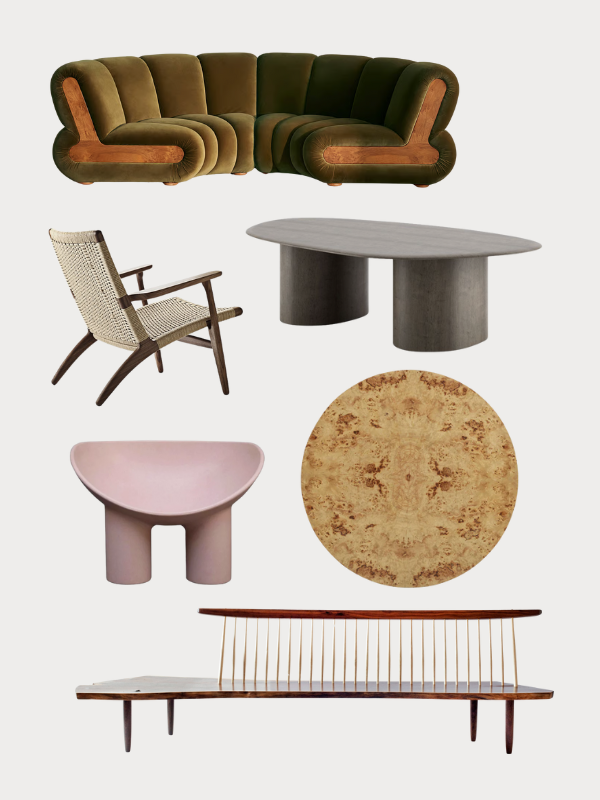Organic Modernism might sound like a contradiction; it’s raw yet refined, sculptural yet subtle. However, that tension is exactly what makes organic modern design irresistible. One needs look no further than the showrooms from October 2025’s High Point Market to know that organic modernism is back in a big way.
This design movement embraces nature without the pesky hints of nostalgia that quickly date a piece of furniture. In this style, stone, wood, linen, and clay coexist with smooth silhouettes and modern restraint. In transitional interiors that balance traditional craftsmanship and contemporary ease, organic modern pieces feel right at home. They soften clean architecture, ground glossy finishes, and make a space feel dynamic.
This trend is not built on novelty. From organic elements to earth tones to soft curves, organic modernism interior design values authenticity, tactility, and longevity. Whether you’re drawn to natural oak, lime-washed finishes, or curvaceous upholstery that feels like it was shaped by hand, the following ten furniture pieces embody Organic Modernism.
Key Elements of the Organic Modern Design Style
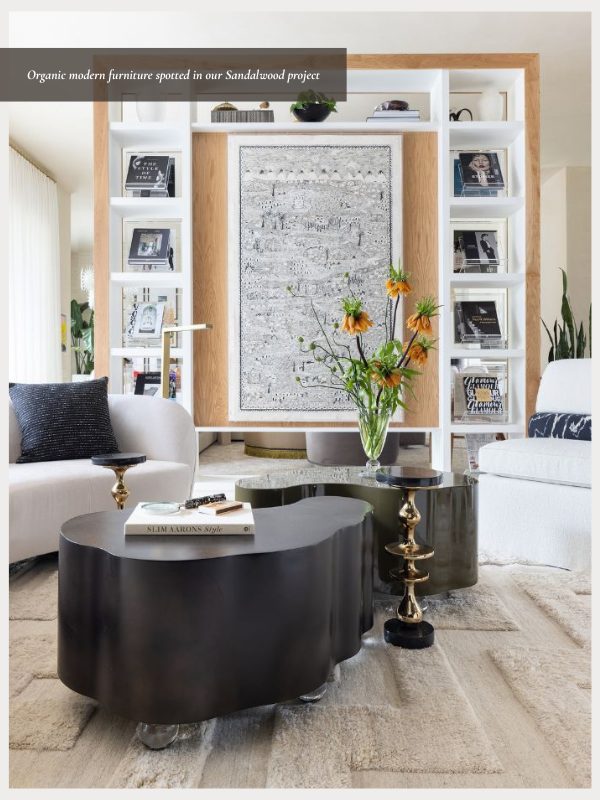
Organic modern strikes a lovely balance between nature and intention. It celebrates imperfect materials like raw wood, textured plaster, honed stone, and handwoven fibers while keeping the overall composition refined and edited. The palette is typically neutral, but that doesn’t mean boring; layered whites, sandy taupes, olive greens, and muted browns across textiles and decor make these spaces feel special.
Curves soften architecture, natural textures give you permission to touch, and furniture feels sculpted rather than manufactured. What defines this style isn’t excess or ornamentation but curation that comes from using materials honestly and allowing them to speak for themselves. Organic modernism is such a breath of fresh air on the heals of more minimalistic or industrial design styles. We hope it lives on forever!
10 Organic Modern Furniture Pieces That Are Stunning in Transitional Interiors
Ethnicraft Ellipse Sofa by Jacques Deneef
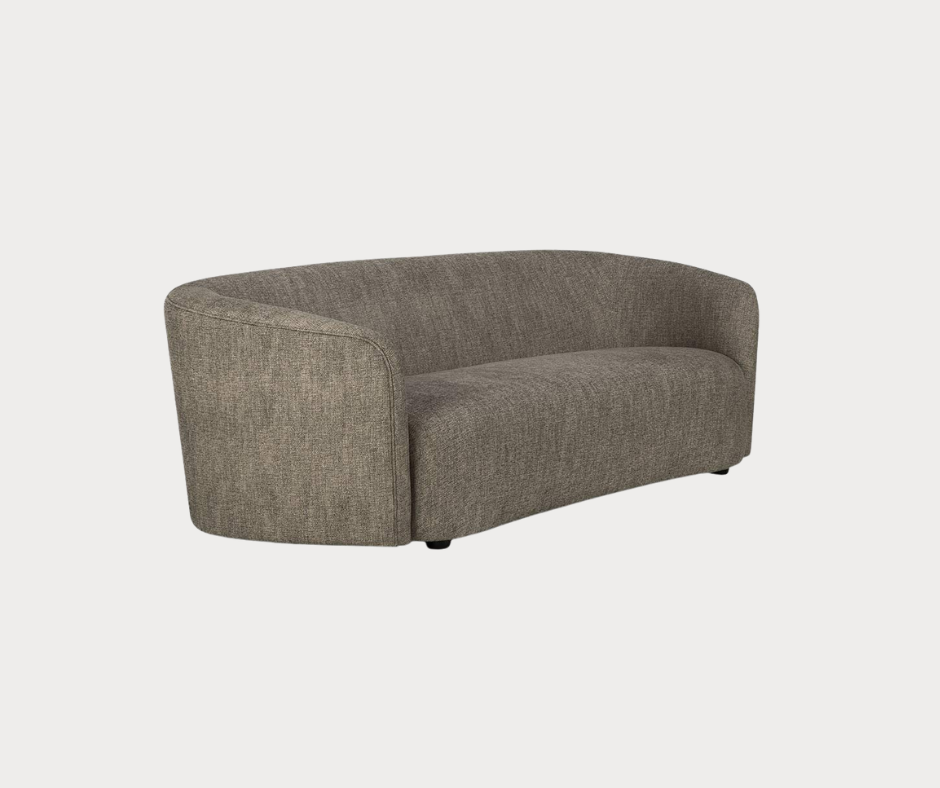
The Ellipse Sofa by Belgian designer Jacques Deneef looks effortless at first glance; it’s quiet, neutral, and softly contoured. But what sets it apart is its balance of generosity and structure. The rounded edges make it approachable, while the tailored upholstery keeps it refined.
In a transitional living room, this sofa adapts easily. It feels natural under a woven pendant or beside vintage lighting. It doesn’t command your attention like a louder postmodern piece, but it completes the space in a way that feels intentional and considered.
Avocado’s Malibu Platform Bed
The Malibu Bed from Avocado is solid walnut with a low, grounded profile that works well in a variety of interiors. You can see the craftsmanship in the joinery and the subtle shifts of tone across the grain. Nothing feels overdesigned or decorative; this piece boasts just clean, thoughtful construction.
This piece works beautifully in transitional bedrooms where natural texture is needed for depth and warmth. The streamlined frame leaves room for layers on the bed like crisp sheets, linen throws, or a wool blanket. It’s straightforward, timeless, and proof that simplicity can feel complete.
Fig Natural Burl Coffee Table from TOV Furniture
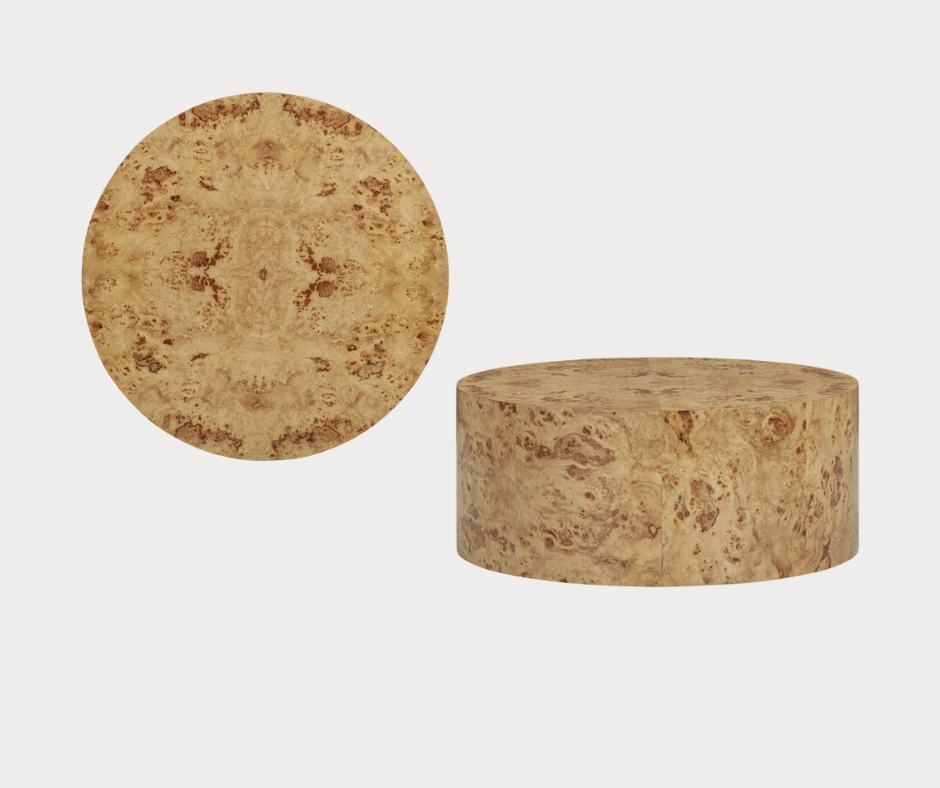
Burl wood has a way of making any space feel more tactile and interesting. The swirling grain of TOV’s Fig Coffee Table adds movement and character, while its cylindrical form keeps the look grounded and substantial. It’s distinctive but still understated enough to live comfortably in both traditional and modern settings.

In a neutral living room, this table is a subtle showstopper. A ceramic vase or a small stack of art books is all it needs to shine. Its appeal lies in how it bridges modern polish with the natural irregularity of organic modernism.
Soho Home’s Noelle Curved Sofa
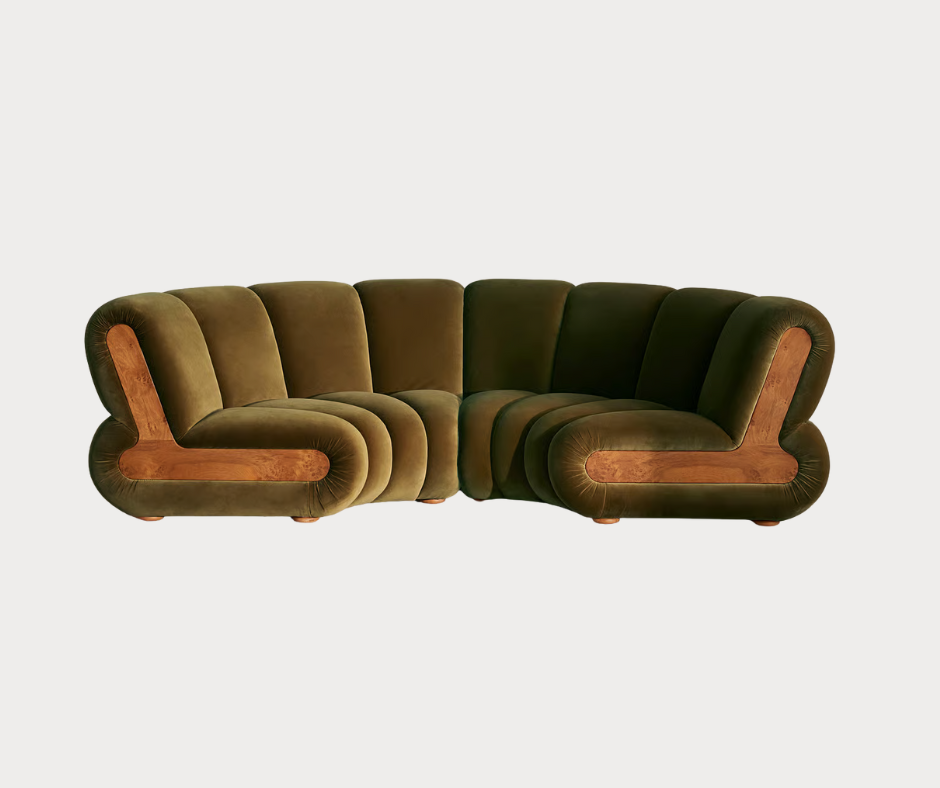
Bouclé and velvet have been everywhere in recent years, but Soho Home’s Noelle Sofa shows why the textures still makes sense in 2025. Its curved frame and deep seat feel generous without overwhelming a room. The hardwood base and oak feet tie it back to the organic materials that define the style.
In transitional interiors, this sofa softens architecture that may feel a bit too rigid or classical. It helps a room feel more relaxed and conversational while maintaining its polish.
Burnell Live-Edge Bed by AllModern
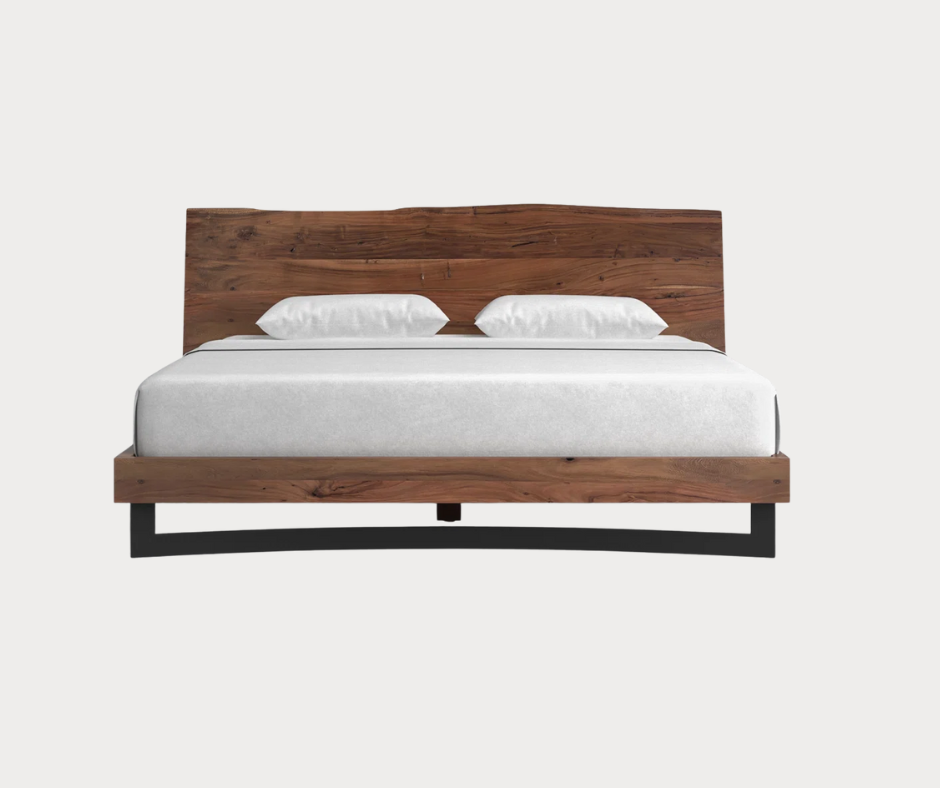
Carved from solid acacia, this bed by AllModern features a live-edge headboard that gives each piece its own identity. The natural variation in the wood grain makes it feel individual, not mass-produced. It reminds us a bit of the live-edge table we designed for our Braeswood Place project.
This design pairs well with cleaner architectural lines and unfussy bedding. The live edge adds an element of unpredictability that breaks up a room’s symmetry just enough to make it interesting. It’s grounded, simple, and just a little bit dramatic.
Faye Toogood’s Roly-Poly Chair
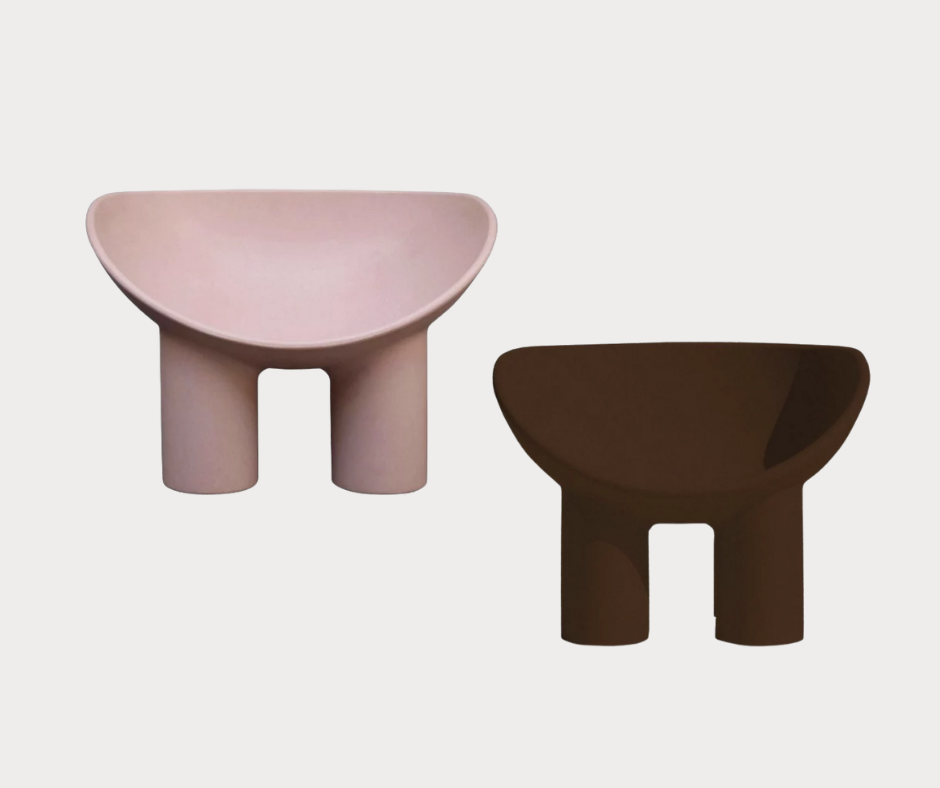
A bit more postmodern than others on this list, Faye Toogood’s Roly-Poly Chair manages to be playful and sculptural at once. Its rounded legs and low seat push proportion in a way that immediately draws the eye, but it still feels livable.
Placed in a more traditional setting, it brings contrast and adds a bit of levity to the space. It offsets symmetry, softens formality, and introduces a sense of ease. It’s memorable without trying to be, which is a true mark of good design.
West Elm’s Organic Modular Table

The Organic Modular Table from West Elm is unfussy but elegant. Its softened corners and visible grain bring warmth to a sharp modern silhouette, and the proportions feel generous without dominating the room.
A table like this adapts gracefully to different settings, decor styles, and times of year. Pair it with slipcovered linen chairs in summer for a light, relaxed feel or oak ones in winter for more depth. In a transitional dining area, it bridges old and new through material honesty rather than unnecessary ornament.
Carl Hansen & Søn’s CH25 Lounge Chair by Hans Wegner

We’ve expressed our love of Wegner furniture in the past, and we’re happy to do it again! Hans Wegner’s CH25 Lounge Chair has remained in production since 1950 for good reason. The papercord seat and backrest are tightly woven, detailed, and meant to age beautifully. The oak frame reveals the craftsmanship in its joinery and subtle shaping so that nothing feels decorative, only intentional.
A piece like Wegner’s introduces the right kind of contrast for transitional interiors; it doesn’t need to be overly sharp or stark. The open weave breaks up smooth upholstery, and the angled frame lightens heavier architectural lines. This straightforward design demonstrates how craft alone can define character.
Blu Dot’s Woodrow Bed
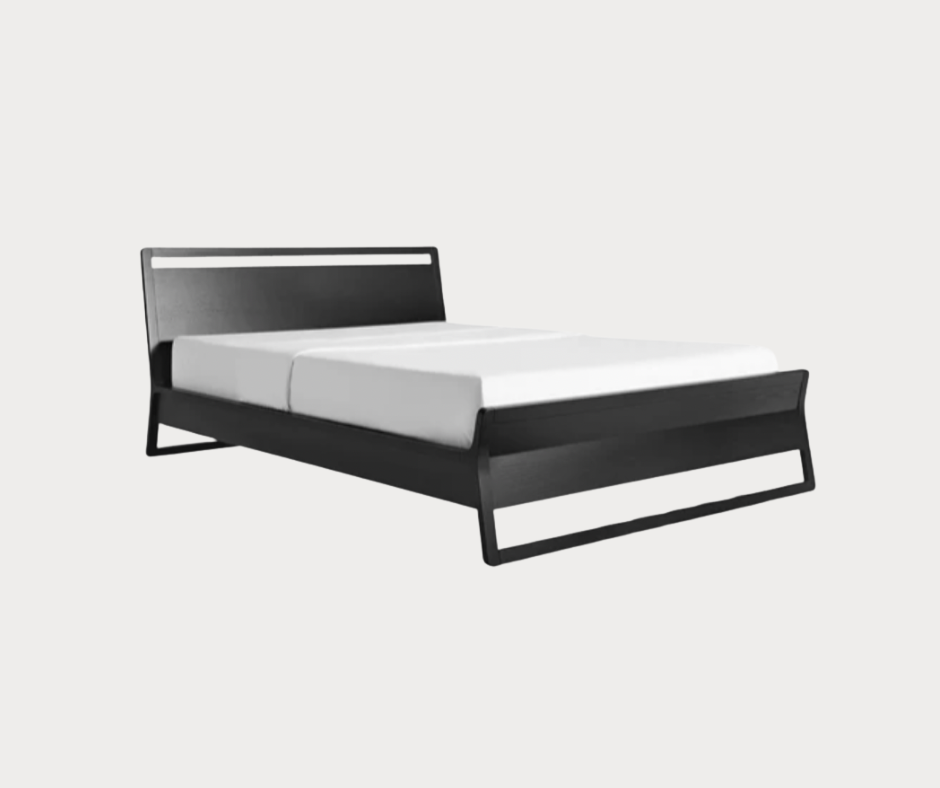
We’ve admired Blu Dot’s ability to make modern furniture feel approachable, and the Woodrow Bed is no exception. The curved walnut frame wraps around an upholstered headboard in a way that feels solid yet gentle; it is modern in proportion but warm and almost classical in presence.
This piece works best in bedrooms that value restraint and cozy (not cold) minimalism. The clean outline sits comfortably beside plaster walls, woven rugs, or linen bedding. It’s quietly architectural so you know it will look just as good ten years from now as it does today.
George Nakashima’s Conoid Bench
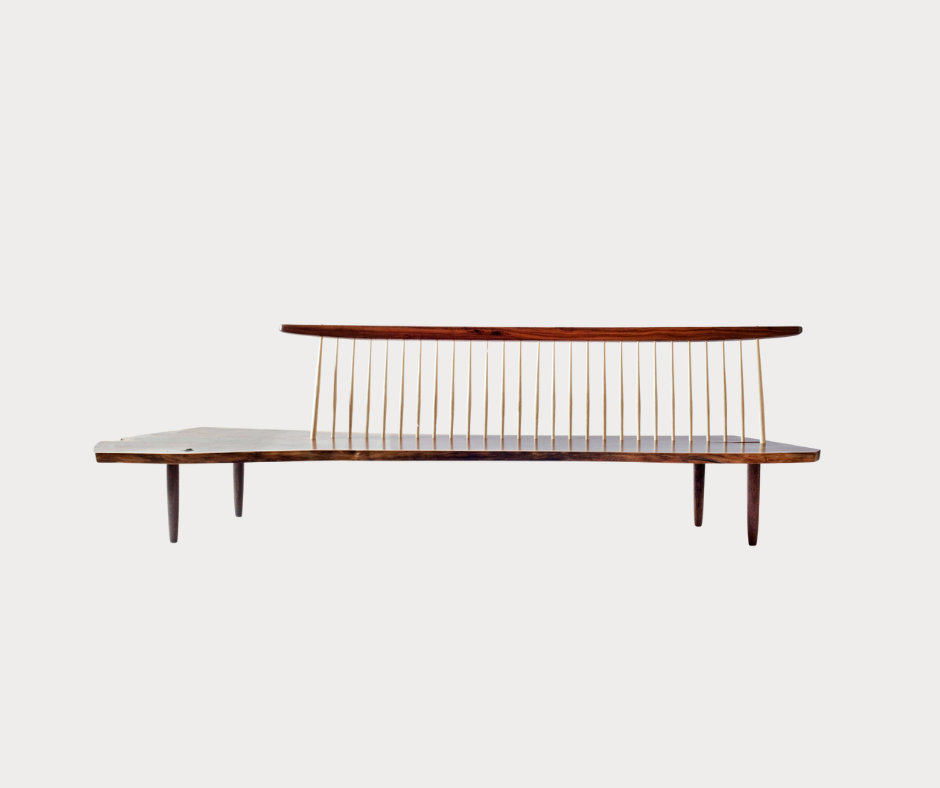
George Nakashima’s work defines organic modernism, and his Conoid Bench might be the clearest example of that philosophy. Crafted from solid wood with exposed joinery and a sculpted seat, it feels alive and dynamic in a way few pieces do. The grain isn’t hidden but rather celebrated, guiding the shape rather than fighting it. Despite the fact that it was introduced in the 1960s, this piece feels so incredibly contemporary to our time.
In transitional interiors, a Nakashima bench introduces integrity and warmth. It sits beautifully at the foot of a bed, along a hallway, or beneath a window where light can catch the surface. Every curve and seam tells the story of the material, reminding us that simplicity is often the hardest thing to achieve well.
The Enduring Calm of Organic Modern Design
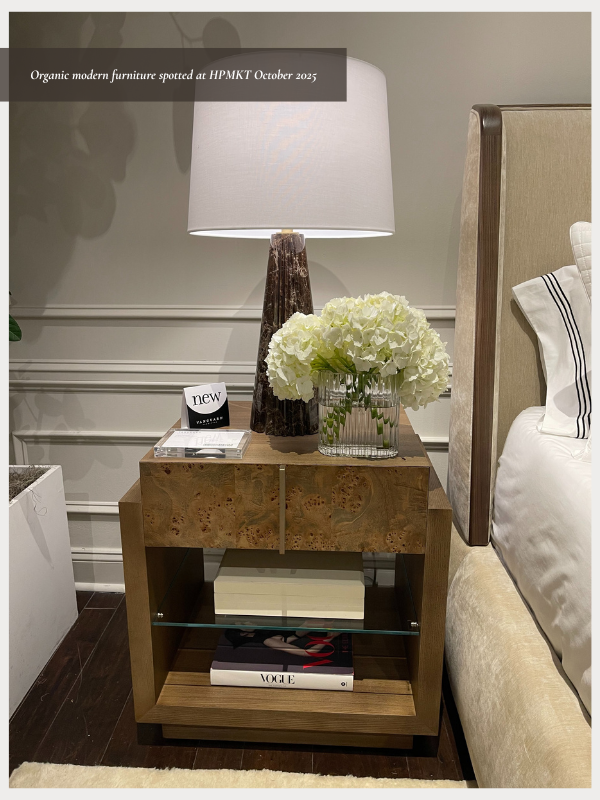
What ties these pieces together is more philosophy than shared aesthetic. Organic modern furniture favors real materials, thoughtful craftsmanship, and subtle forms that age well. We keep coming back to them for a reason. They remind us that simplicity isn’t emptiness and that restraint isn’t cold minimalism. Sometimes, the most modern thing in a room is the piece that feels the most human.



